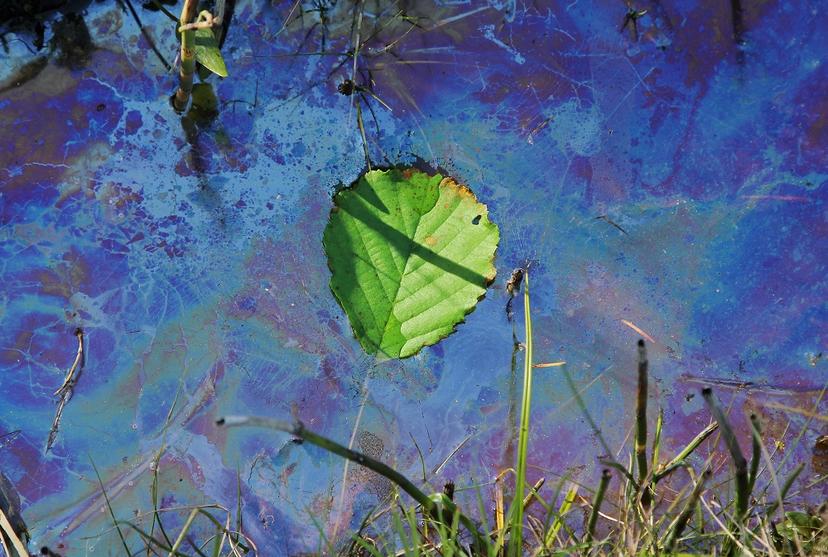Environmental Protection through Control of Toxic Substances
Learn about the challenges faced by regulatory officials to identify environmental pollutants
14 Jul 2016


Dr Alexander Soin, Research Scientist, Environmental Chemistry Laboratory, California Department of Toxic Substances Control (DTSC).

The DTSC aims to protect California’s people and the environment from harmful effects of toxic substances by restoring contaminated resources, whilst enforcing hazardous waste laws and encouraging the use of chemically safer products for manufacturing.
SelectScience® spoke to Dr Alexander Soin, Research Scientist, California Department of Toxic Substances Control (DTSC), to hear how he uses inductively coupled plasma mass spectrometry (ICP-MS) and ion chromatography to detect organic and inorganic pollutants.
The DTSC consists of over 1,000 scientists, engineers and legal staff that work towards creating a cleaner and healthier environment for Californians. “I mostly work with environmental samples and sometimes waste materials, doing sample preparation prior to testing for inorganic and organic pollutants. I also perform a lot of analysis by various EPA methods such as 8310, 6020, 6010”, Alexander explained.
The range of potentially toxic substances is vast and “the majority of man-made toxic substances have very severe health effects and are known carcinogens”, described Alexander. “Some chemicals are extremely hazardous for flora and fauna and could damage or even completely destroy existing bio-systems”, he explained. This is a particular issue when these substances are found in massively produced consumer products that are widely spread. According to Alexander, there are several instances of these toxic substances leaching into the environment: “unfortunately, history knows many cases like this such as DDTs and other pesticides, as well as BFRs, PCBs, and PAHs, etc”.
Analytes of interest
A particular chemical of interest that Alexander looks for is hexavalent chromium. Industrial use of hexavalent chromium is extensive and figures suggest that it is “produced in 100K+ tonnage annually”. Many California locations are rich in naturally occurring hexavalent chromium, which can lead to adversely high levels in drinking water through leaching. To analyze heavy metals, the DTSC use “tests such as TCLP and WET (Toxicity Characteristic Leaching Procedure and Waste Extraction Test)”, which each have certain limits for every element according to the metal’s natural occurrence, toxicity, leaching properties.
Analysis of heavy metals and other environmental pollutants can be an arduous process and Alexander explains that “the main challenges we face are related to EPA methods”. “The majority of methods are designed to work for one or maybe two sample/matrix types”, however, according to Alexander, the range of samples he receives is very diverse and “there’s no matrix which is very easy to deal with”. He also suggests that “even drinking water, which sounds like the easiest task, can cause many interferences and false positives using IC-ICP-MS, ICP or ICP-MS tests”.
Facilitating efficient detection
DTSC is a state-of-the-art facility that has recently invested a lot of money into the latest instruments. Primarily, Alexander uses the Thermo Scientific™ iCAP™ Q ICP-MS for hexavalent chromium/chromium speciation tests in drinking water, as well as heavy metals. For sample preparation, Alexander uses the latest microwave digestion technology, which he describes as “very exciting indeed”, and hopes will “be able to increase throughput and decrease sample preparation times significantly”.
The instrumentation used has been carefully selected based on their efficiencies in performing specific tasks. For ICP analysis, polyatomic interferences can pose a challenge for low ppb trace analysis of heavy metals, however, Alexander informs us that “the iCAP Q ICP-MS has a very solid kinetic energy dispersion cell”, which is designed to eliminate these interferences.
Vision for the future
Currently working largely on methods development and EPA compliances, Alexander believes that the future of his job may “involve closer relations with sample collectors, analysis requestors, law enforcement and even manufacturers in order to reduce hazardous waste generation”. He hopes that this will also “encourage the manufacture of chemically safer products”. Alexander summarizes, “DTSC’s vision for Californians is to enjoy a clean and healthy environment with the hope that other states and countries will adopt such vision and actions as well”.
To learn more about the DTSC, watch this video for a look inside the Environmental Chemistry Laboratory (ECL).
